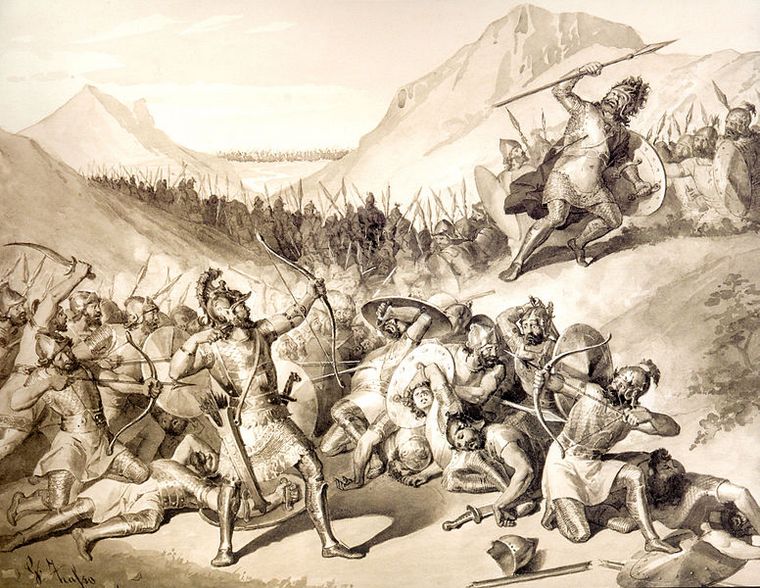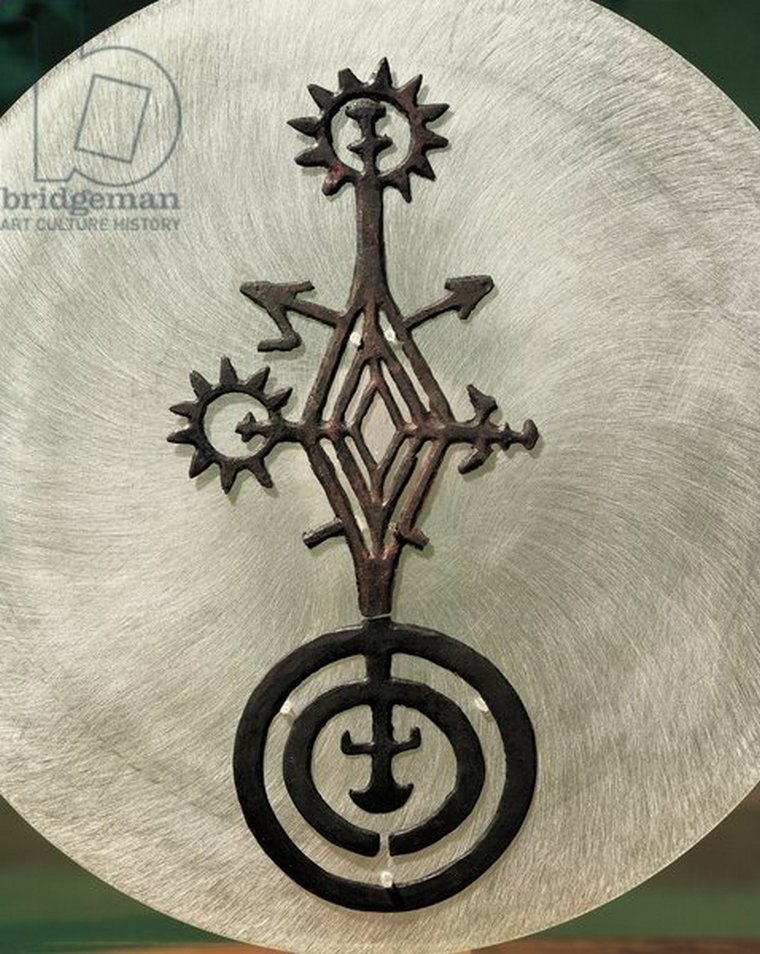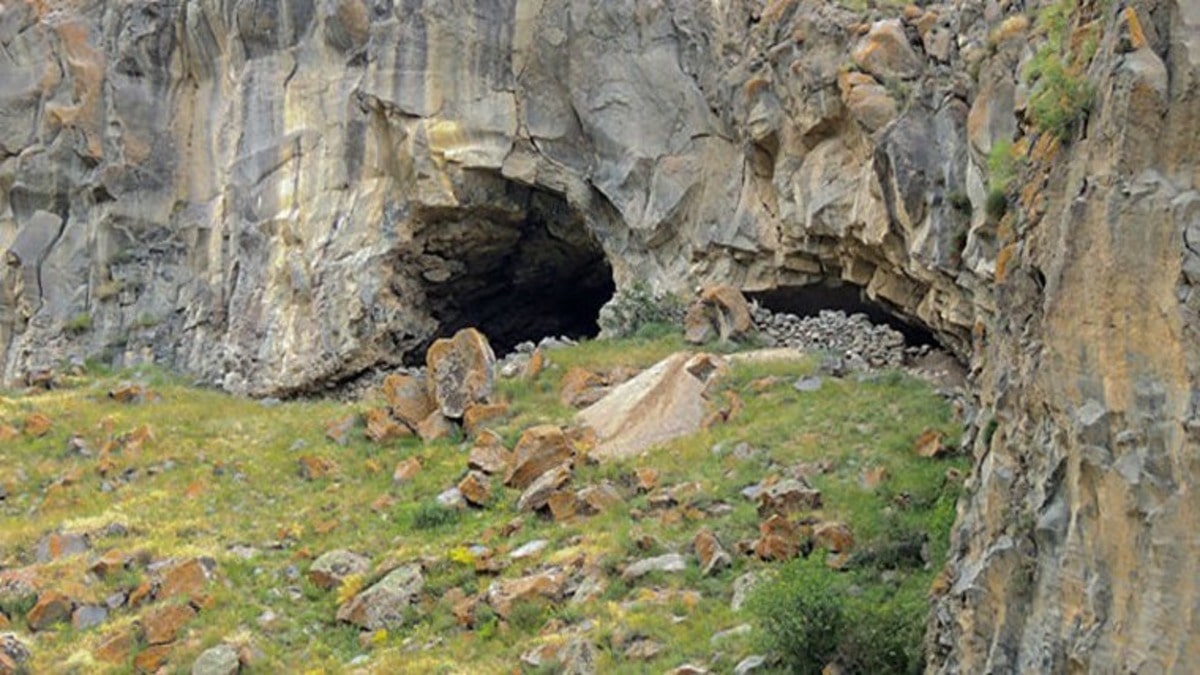 A recent study of Armenian DNA revealed that modern Armenians show signs of mixture of local Bronze Age people. Those ancient populations, which demonstrate a high level of affinity to Neolithic Europeans, have maintained homogeneity for over three millennia.
A recent study of Armenian DNA revealed that modern Armenians show signs of mixture of local Bronze Age people. Those ancient populations, which demonstrate a high level of affinity to Neolithic Europeans, have maintained homogeneity for over three millennia.
Armenians themselves are distinct from their neighbors. They have their own unique church, the Armenian Apostolic Church that was founded in the 1st century AD. In 301 AD, the first branch of Christianity was adopted as a state religion in Armenia. Armenians have a unique alphabet and language as well, and the Armenian language is classified as an independent branch of the Indo-European language family.
The historical homeland of Armenians lies to the north of the Fertile Crescent, which is a region that played a crucial role in modern human evolution. Genetic and archaeological data show high possibility that the first farmers spread from this region into Europe and interacted/admixed with indigenous hunter-gatherer populations during the Neolithic.
Additionally, the location of Armenia might be important for the spread of Indo-European languages as it is suggested to have been close or have environed the Proto-Indo-European homeland, Anatolia or Pontic Steppe. From this region, the first Indo-Europeans along with their culture spread to Europe, Central Asia, and India.
Ethnogenesis of Armenians

Bel tried to impose his tyranny upon Hayk’s people. But proud Hayk refused to submit to Bel. As soon as his son Aramaneak was born, Hayk rose up and led his people back to his ancestral land of Ararat. At the foot of the mountain, he built a village and called it with his name “Haykashen”.
This is how a 5th-century Armenian historian Movses Khorenatsi describes the legendary founding of the Armenian nation, which occurred in 2492 BC. Although this particular date is unattested, the dating of the Armenian ethnogenesis may gain credibility from a new genetic study.
This new study published in the bioRxiv preprint service for biology suggests that the Armenian people are the descendants of several local Bronze Age tribes. A team of international scholars from the UK, Spain, Italy, and Lebanon headed by Marc Haber studied Armenian genes and compared them with the DNA of 78 other populations from all over the world, including ancient genetic samples. They conclude:
The Armenians show signatures of an origin from a mixture of diverse populations occurring 3,000 to 2,000 BCE. This period spans the Bronze Age, characterized by extensive use of metals in farming tools, chariots, and weapons, accompanied by the development of the earliest writing systems and the establishment of trade routes and commerce.
We note that these mixture dates also coincide with the legendary establishment of Armenia in 2,492 BCE.
No admixture signs after the Bronze Age

After 1200 BC, Armenians, unlike their neighbors, do not show significant signs of admixture. Armenians have apparently stopped mixing 3-4 thousand years ago, allowing their descendants to carry little to no DNA of foreign populations and retain their ethnic and cultural homogeneity.
Haber et. al write:
Our tests suggest that Armenians had no significant mixture with other populations in their recent history and have thus been genetically isolated since the end of the Bronze Age, 3,000 years ago.

Authors argue that the cessation of Armenian admixture has been a result of the collapse of Bronze Age civilizations as well as the distinctiveness of the Armenian cultural development.
Admixture signals decrease to insignificant levels after 1,200 BCE, a time when Bronze Age civilizations in the eastern Mediterranean world suddenly collapsed, with major cities being destroyed or abandoned and most trade routes disrupted. This appears to have caused Armenians’ isolation from their surroundings, subsequently sustained by the cultural/linguistic/religious distinctiveness that persists until today.

Armenians’ adoption of a distinctive culture early in their history resulted in their genetic isolation from their surroundings. Their genetic resemblance today to other genetic isolates in the Near East, but not to most other Near Easterners, suggests that recent admixture has changed the genetic landscape in most populations in the region.
The study then describes the genetic uniqueness of Armenians:
We compared patterns of admixture in Armenians to other regional populations and detected signals of recent admixture in most other populations. For example, we find 7.9% (±0.4) East Asian ancestry in Turks from admixture occurring 800 (±170) years ago coinciding with the arrival of the Seljuk Turks in Anatolia from their homelands near the Aral Sea. We also detect sub-Saharan African gene flow 850 (±85) years ago in Syrians, Palestinians, and Jordanians, consistent with previous reports on recent gene flow from Africans to Levantine populations after the Arab expansions.
Outside Armenia, the local genetic landscape appears to have been continuously reshaping. As a result, modern Armenians are prime representatives of ancient Anatolian populations, much more than Turks.

The position of the Armenians within the global genetic diversity is unique and appears to mirror the geographical location of Anatolia. Previous genetic studies have generally used Turks as representatives of ancient Anatolians. Our results show that Turks are genetically shifted towards Central Asians, a pattern consistent with a history of the mixture with populations from this region.
These results reaffirm previous studies, including Hellenthal et. al., 2014, that also didn’t spot admixture signals within Armenians for the past 3-4 millennia.
Affinity to ancient Europeans
The Armenian Highlands and Anatolia connect Europe, Near East, and the Caucasus. The location of these regions has allowed them to play a crucial role in several modern human expansions in Eurasia. The Armenian Highlands and Anatolia have been inhabited at least since the early Upper Paleolithic. The oldest known monument built by hunter-gatherers in ca. 10th millennium BC is also located there.

The region is argued to have been the homeland and/or the migration route towards Europe for the Near Eastern farmers during the Neolithic and is also believed to have played a key role in the spreading of early Indo-European languages. The positioning of Armenia at the northern outskirts of Near East suggests a probable connection with the spreading Neolithic farmers.
To compare Armenians with ancient Europeans, scholars analyzed samples of ancient European DNA, including the samples of Ötzi the Iceman, a 5,300 years old individual discovered on the Italian part of the Ötztal Alps:
We show that Armenians have a higher genetic affinity to Neolithic Europeans than other present-day Near Easterners and that 29% of the Armenian ancestry may originate from an ancestral population best represented by Neolithic Europeans.
We find in Armenians and other genetic isolates in the Near East high shared ancestry with ancient European farmers with ancestry proportions similar to present-day Europeans but not to present-day Near Easterners… Our tests show that most of the Near East genetic isolates ancestry shared with Europeans can be attributed to expansion after the Neolithic period.
As genetic isolates in the Near East, Armenians probably still maintain the features of the ancient Near Eastern genetic landscape, which shows more affinity to Europe than the majority of modern populations in the Near East do. The study of Armenian DNA is particularly interesting to scholars studying the European DNA since the Armenians depict the state of DNA groups before they started migrating.
Sources: PeopleOfAr
www.biorxiv.org www.biorxiv.org.full.pdf




11 thoughts on “Armenians Show Great Genetic Affinity to Ancient Europeans”
Do these idiots not know that the turks have NOTHING to do with ancient Anatolians?